Stop the Squabbles: How to Manage Resource Guarding Between Dogs
📍 Service Area Notice: DW Dog Training provides in-person training services exclusively in the Greater Baltimore area. While our blog content is designed to help dog owners internationally, our hands-on training services are locally focused. For readers outside our service area, we hope you find value in our articles and welcome you to reach out with questions!
Is dog-to-dog resource guarding turning your home into a battleground?
You’re not alone.
Watching your furry friends fight over food, toys, or even your attention can be incredibly stressful. It’s like refereeing a never-ending sibling rivalry, except the siblings have sharp teeth and don’t respond to timeouts.
But here’s the good news: with the right approach, you can restore peace to your canine kingdom. This isn’t just about stopping fights; it’s about creating a harmonious household where all your pups feel secure.
So, let’s roll up our sleeves and dig into the nitty-gritty of managing resource guarding between dogs.
Key Takeaways
- Resource guarding is a natural behavior in dogs, but it can become problematic in multi-dog households
- Early socialization and positive reinforcement are crucial in preventing resource-guarding
- Consistent training techniques like desensitization and counterconditioning can help reduce guarding behaviors
- Creating a resource-rich environment can minimize competition between dogs
- Professional help may be necessary for severe cases of resource-guarding
- Management strategies, such as separate feeding areas and rotating high-value items, can prevent conflicts
- Understanding dog body language is essential for identifying early signs of resource-guarding
- Patience and consistency are key when addressing resource-guarding behaviors
Managing Resource Guarding in Dogs
Early Socialization
Expose puppies to various situations involving resources and other dogs.
Positive Reinforcement
Reward calm behavior around resources when other dogs are present.
Resource-Rich Environment
Provide plenty of resources to reduce competition between dogs.
Separate Feeding Areas
Feed dogs in different areas or rooms to prevent mealtime conflicts.
Understanding Dog-to-Dog Resource Guarding
Before we dive into the specifics of resource guarding, it’s important to grasp the broader concept and its implications in multi-dog households. Resource guarding is a complex behavior that can manifest in various ways and for different reasons. Let’s break it down to get a clearer picture of what we’re dealing with.
What is Resource Guarding?
Resource guarding is when a dog shows protective behaviors over items they consider valuable. It’s like that kid in the playground who won’t share their toys, except with more growling and fewer tantrums (usually). In multi-dog households, this can manifest as one dog preventing others from accessing food, toys, resting spots, or even human attention.
This behavior can range from subtle body language cues to more overt aggressive displays. A resource-guarding dog might stiffen their body, give a hard stare, growl, snap, or even bite when another dog approaches their perceived resource. It’s their way of saying, “This is mine, and you can’t have it!”
While it may seem like simple greediness to us, for dogs, resource guarding is rooted in their instinctual need to survive. In the wild, a dog that couldn’t protect its resources wouldn’t last long. Our domesticated pups may not need to fight for survival, but those instincts are still very much alive.
Common Triggers
Understanding what typically triggers resource guarding can help you identify potential problem areas in your household. Here are some common triggers:
- Food and treats: This is often the most intense form of resource guarding. Dogs may guard their food bowls, bones, or even crumbs on the floor.
- Toys, especially new or high-value ones: That new squeaky toy or the extra-special chew can become a hot commodity.
- Resting spots like beds or favorite corners: Dogs may guard their sleeping areas or preferred lounging spots.
- Human attention or affection: Sometimes, the resource being guarded is you! A dog may try to prevent other dogs from approaching when you’re petting them.
- Water bowls: Although less common, some dogs may guard their water source.
- Found objects: That sock they stole from the laundry basket might suddenly become a prized possession.
Remember, what constitutes a valuable resource can vary from dog to dog. What seems insignificant to us might be treasure in your dog’s eyes.
Signs and Symptoms
Recognizing the signs of resource guarding is crucial for addressing the issue before it escalates. Here are some warning signs to watch out for:
- Growling or snarling when another dog approaches their resource
- Snapping or biting if another dog gets too close
- Hovering over or quickly consuming food when other dogs are near
- Carrying toys or objects away from other dogs
- Freezing or becoming very still when in possession of a resource
- Whale eye (showing the whites of their eyes while looking at the approaching dog)
- Raising hackles (the hair along their back)
- Blocking access to the resource with their body
- Lunging at other dogs who come near their perceived possession
It’s important to note that these behaviors can range from mild to severe. A slight stiffening of the body might be easy to miss, while a full-on fight is impossible to ignore. Learning to read your dog’s body language can help you catch and address resource guarding in its early stages.
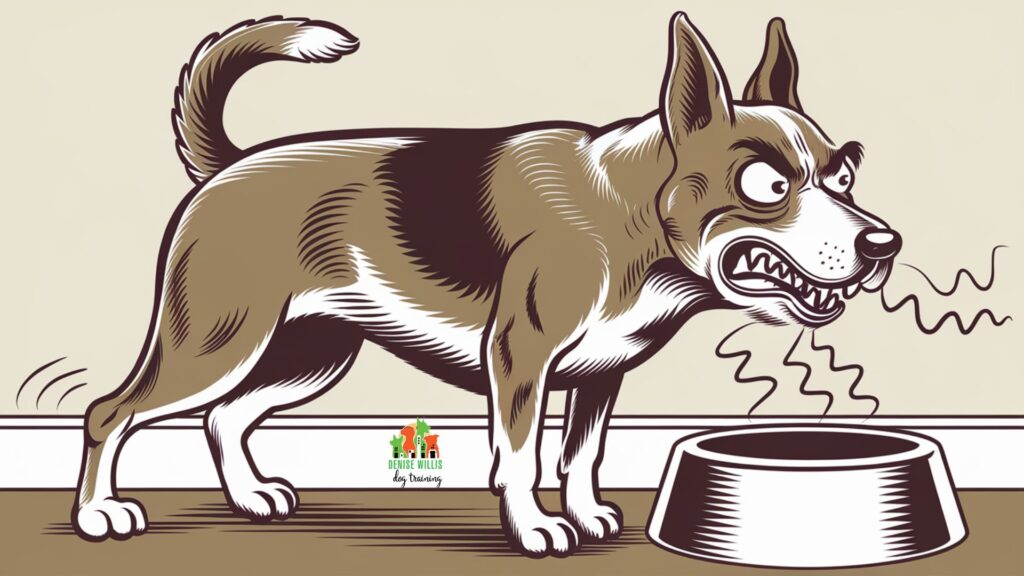
The Root Causes of Resource Guarding
To effectively address resource guarding, it’s crucial to understand why dogs exhibit this behavior. Resource guarding doesn’t happen in a vacuum; it’s influenced by a combination of instinct, learned behavior, and environmental factors. Let’s explore the primary root causes of this common canine issue.
Instinctual Behavior
At its core, resource guarding is a survival instinct. In the wild, dogs that couldn’t protect their resources didn’t survive to pass on their genes. Your pampered pooch might not need to fight for survival, but those instincts are still hardwired.
This instinctual behavior goes back to dogs’ wolf ancestors. In a wolf pack, resources like food, mates, and territory are crucial for survival. While our domestic dogs don’t face the same survival pressures, they still retain some of these instincts.
It’s important to understand that some level of resource guarding is normal and even adaptive in certain contexts. The problem arises when this behavior becomes excessive or dangerous in a domestic setting.
Past Experiences
Dogs who have experienced scarcity or competition for resources in the past are more likely to guard. This is common in rescue dogs who may have had to compete for food in shelters or on the streets.
For example, a dog who grew up in a neglectful situation where food was scarce might be more likely to guard their food bowl, even years after being in a loving home with plenty of food. These past experiences create a lasting impression that resources are limited and must be fiercely protected.
Similarly, dogs who have had negative experiences around resources (like being punished for eating or having toys suddenly taken away) may develop guarding behaviors as a defensive mechanism.
Lack of Socialization
Dogs who haven’t learned to share or interact positively with other dogs around resources during their critical socialization period (3-16 weeks) may be more prone to guarding behaviors.
Proper socialization involves exposing puppies to a wide variety of experiences, including the presence of other dogs during feeding times or play sessions. Without these positive experiences, dogs may not develop the social skills necessary to feel comfortable around others when resources are present.
Additionally, dogs who haven’t been taught impulse control or basic obedience may struggle more with resource guarding. These dogs haven’t learned that good things come to those who wait or that listening to their humans leads to rewards.
Understanding these root causes can help you approach resource guarding with empathy and insight. Remember, your dog isn’t being “bad” or “dominant” – they’re responding to instincts and learned behaviors. With this knowledge, you can start to address the problem at its source.
Prevention Strategies
As with many behavioral issues, prevention is often easier than cure when it comes to resource guarding. By implementing these strategies early, you can help your dogs develop a healthy relationship with resources and each other. Let’s explore some effective prevention techniques that can set your dogs up for success.
Early Socialization
Expose puppies to various situations involving resources and other dogs. Let them learn that the presence of another dog near their stuff is no big deal. It’s like teaching kids to share in preschool, but with more tail-wagging.
Early socialization is crucial in preventing resource guarding. Here’s how you can do it:
- Arrange puppy playdates where the pups can safely interact around toys and treats
- Practice “trade-ups” where you offer your puppy something better in exchange for what they have
- Introduce your puppy to a variety of people and dogs in positive, controlled settings
- Expose your puppy to different environments, sounds, and experiences to build their confidence
Remember, socialization should always be a positive experience. Never force your puppy into situations that frighten them, as this can lead to negative associations.
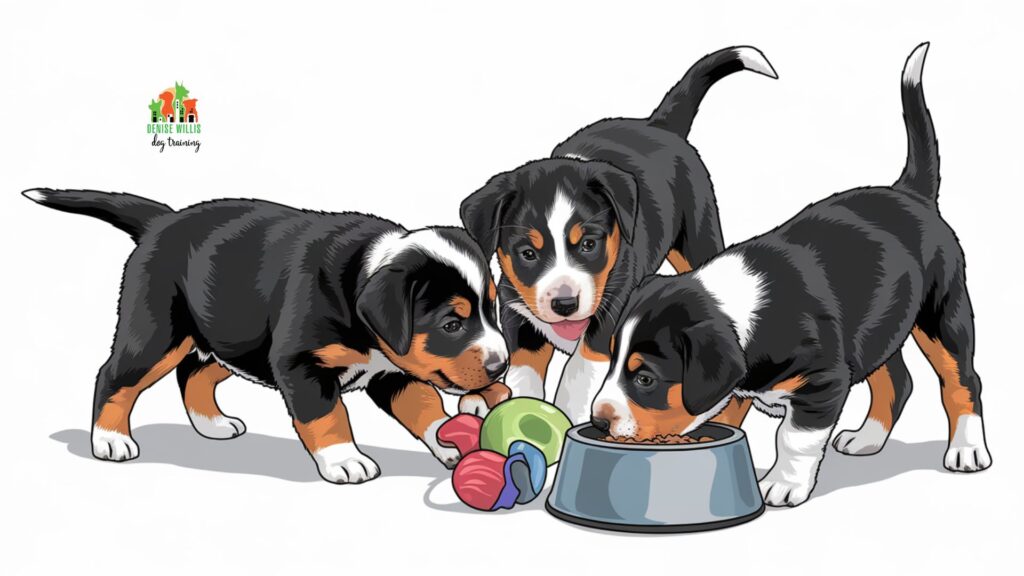
Positive Reinforcement Training
Reward your dogs for calm behavior around resources when other dogs are present. This teaches them that good things happen when they play nice.
Positive reinforcement is a powerful tool in preventing resource guarding. Here’s how to use it:
- Reward your dogs with treats or praise when they’re calmly coexisting near resources
- Practice “leave it” and “drop it” commands, rewarding your dogs for complying
- Use clicker training to mark and reward desired behaviors
- Create positive associations with the presence of other dogs by offering high-value treats when another dog approaches
Consistency is key in positive reinforcement training. Make sure all family members are on board with the training approach to avoid sending mixed signals.
Creating a Resource-Rich Environment
Ensure there are plenty of resources to go around. Multiple feeding stations, several water bowls, and toys galore can reduce competition. It’s like putting out extra snacks at a party to avoid a stampede to the chip bowl.
Here are some ways to create a resource-rich environment:
- Provide multiple food and water stations throughout your home
- Have a variety of toys available, rotating them regularly to keep things interesting
- Create several comfortable resting areas for your dogs
- Ensure each dog has their own “safe space” where they can retreat if needed
Remember, a resource-rich environment isn’t just about quantity – it’s about quality and variety too. Different dogs may value different types of resources, so observe what each of your dogs prefers and provide accordingly.
By implementing these prevention strategies, you’re setting up a foundation for harmonious coexistence among your dogs. However, if resource guarding is already an issue in your household, don’t worry – the next sections will cover management and training techniques to address existing problems.
Resource Guarding Management Timeline
Early Socialization
Start exposing puppies to various situations involving resources and other dogs. This helps prevent resource guarding behaviors from developing.
Positive Reinforcement Training
Implement positive reinforcement techniques to reward calm behavior around resources when other dogs are present. This creates positive associations with sharing.
Create Resource-Rich Environment
Ensure there are plenty of resources to go around. Provide multiple feeding stations, water bowls, and toys to reduce competition between dogs.
Implement Management Strategies
Establish clear rules and routines, separate feeding areas, and rotate high-value items to prevent conflicts and reduce guarding behaviors.
Advanced Training Techniques
Apply desensitization and counterconditioning techniques to change emotional responses to resource-related triggers. Teach “leave it” and “drop it” commands.
Ongoing Management and Assessment
Continuously monitor and adjust strategies as needed. Seek professional help if resource guarding persists or worsens despite your efforts.
Managing Resource Guarding in Multi-Dog Households
When resource guarding becomes an issue in a multi-dog household, effective management is crucial. While training is important, management strategies can provide immediate relief and prevent conflicts while you work on longer-term solutions. Here’s how you can manage resource guarding to create a more peaceful home for all your furry friends.
Establish Clear Rules and Routines
Consistency is key. Set up feeding routines, play schedules, and rules for resource access. Your dogs should know what to expect and when.
Creating structure and predictability can help reduce anxiety and competition among your dogs. Here’s how to establish clear rules and routines:
- Set regular feeding times and stick to them
- Create a consistent schedule for walks and playtime
- Establish and enforce house rules (e.g., no dogs on the furniture, or all dogs allowed on furniture)
- Be consistent with commands and expectations for all dogs
Remember, dogs thrive on routine. When they know what to expect, they’re less likely to feel the need to guard resources.
Separate Feeding Areas
Feed your dogs in different areas or rooms to prevent mealtime conflicts. It’s not segregation; it’s peaceful dining.
Separating your dogs during mealtimes can significantly reduce food-related guarding. Here are some tips:
- Use baby gates or closed doors to create separate feeding spaces
- Feed dogs in their crates if they’re crate-trained
- Supervise mealtimes to ensure dogs stay in their designated areas
- Pick up food bowls after meals to prevent lingering tensions
Some dogs may need to be separated for other high-value resources too, like chew toys or bones. Observe your dogs’ behavior to determine what level of separation is necessary.
Rotate High-Value Items
Don’t leave high-value toys or chews out all the time. Bring them out for supervised play sessions and put them away afterward. This reduces the opportunity for conflicts.
Here’s how to effectively rotate high-value items:
- Identify which items cause the most guarding behavior
- Only bring these items out when you can directly supervise
- Have enough high-value items for each dog to have their own during supervised sessions
- Put the items away when the play session is over
- Regularly introduce new toys to prevent any single item from becoming too precious
By managing your dogs’ environment in these ways, you can significantly reduce the occurrence of resource guarding behaviors. However, management alone is not a long-term solution. It should be used in conjunction with training techniques to address the root of the problem.
Training Techniques to Reduce Resource Guarding
While management strategies are important for preventing conflicts, training is key to changing your dogs’ emotional responses and behaviors around resources. These techniques require patience and consistency, but they can lead to long-lasting improvements in your dogs’ relationships with each other and with valuable resources.
Desensitization and Counterconditioning
Gradually expose the guarding dog to the presence of other dogs near their resources, starting at a distance where they’re comfortable. Pair this exposure with positive experiences (like treats) to change their emotional response.
Here’s a step-by-step guide to desensitization and counterconditioning:
- Identify the threshold: Find the distance at which the guarding dog notices the other dog but doesn’t react negatively.
- Create positive associations: When the other dog is at this distance, give the guarding dog high-value treats.
- Gradually decrease distance: Over multiple sessions, slowly bring the other dog closer, always staying below the threshold where the guarding dog reacts negatively.
- Practice with different resources: Repeat this process with various items that typically trigger guarding.
Remember, this process takes time. Rush it, and you risk setbacks. The goal is to change the guarding dog’s emotional response from “That dog near my stuff is bad news” to “That dog near my stuff means I get treats!”
Teaching “Leave It” and “Drop It” Commands
These commands can be lifesavers in preventing or interrupting guarding behaviors. Practice them regularly in low-stress situations before using them in high-stakes scenarios.
Here’s how to teach these crucial commands:
“Leave It‘:
- Hold a treat in your closed fist.
- Let your dog sniff your fist. When they stop trying to get the treat, say “Yes!” and give them a different treat from your other hand.
- Gradually increase the difficulty by placing the treat on the floor and covering it with your hand, then eventually leaving it uncovered.
”Drop It‘:
- Give your dog a toy they like, but not their absolute favorite.
- Offer them a high-value treat and say “Drop it.”
- When they drop the toy, give them the treat and lots of praise.
- Practice until your dog reliably drops items on command.
Rewarding Calm Behavior Around Resources
Catch your dogs being good! Reward them when they’re calmly coexisting around resources. It’s like giving your kids a gold star for not fighting over the TV remote.
Here’s how to implement this technique:
- Whenever you notice your dogs peacefully coexisting near resources, quietly praise them and offer treats.
- If one dog moves away from a resource to let another dog have it, reward this polite behavior generously.
- Practice having your dogs sit and stay while you place resources on the floor, rewarding them for remaining calm.
Remember, the key to successful training is consistency and patience. These techniques work by slowly changing your dogs’ associations and behaviors around resources. It’s not an overnight fix, but with time and effort, you can see significant improvements in your dogs’ resource guarding behaviors.
When to Seek Professional Help
While many cases of resource guarding can be managed at home with patience and consistent training, there are times when professional help is not just beneficial, but necessary. Recognizing when you’re in over your head is crucial for the safety and well-being of both you and your dogs.
Signs That the Problem is Beyond DIY Solutions
If you’re seeing any of these signs, it’s time to call in the pros:
- Frequent or intense fights between your dogs: If conflicts are occurring regularly or with increasing intensity, professional intervention is crucial.
- Guarding behaviors that are getting worse despite your efforts: If you’ve been trying to address the issue but see no improvement or even regression, a professional can offer new strategies.
- Any injuries resulting from resource guarding incidents: If any dog (or human) has been injured due to resource guarding, immediate professional help is necessary.
- You feel unsafe managing the situation on your own: Your safety and comfort are paramount. If you feel scared or overwhelmed, it’s time to get help.
- The resource guarding extends to multiple contexts or resources: If a dog is guarding various items or spaces, or the behavior is generalizing, professional help can prevent further escalation.
- Other behavioral issues are present alongside resource guarding: Sometimes, resource guarding is part of a larger behavioral problem that requires comprehensive treatment.
Remember, seeking help is not a sign of failure. It’s a responsible decision that shows you’re committed to your dogs’ well-being.
Benefits of Working with a Professional Trainer
A professional can:
- Assess the situation objectively: Sometimes we’re too close to the problem to see it clearly. A professional can provide an unbiased evaluation of your dogs’ behaviors and the household dynamics.
- Create a tailored training plan for your specific dogs: Every dog and every household is unique. A professional can develop a plan that takes into account your dogs’ individual personalities, the specific resources being guarded, and your household setup.
- Teach you proper techniques for safe management and training: A trainer can demonstrate hands-on techniques and guide you through implementing them correctly.
- Provide ongoing support and adjustments as needed: Resource guarding isn’t solved overnight. A professional can offer continued support, answering questions and adjusting the plan as your dogs progress.
- Ensure safety for all involved: Professionals know how to set up training scenarios that minimize the risk of conflicts or injuries.
- Address underlying issues: Sometimes, resource guarding is a symptom of a larger problem, like anxiety or lack of socialization. A professional can help identify and address these root causes.
Remember, working with a professional doesn’t mean you’ve failed. It means you’re committed to finding the best solution for your dogs. Many owners find that the peace of mind and rapid progress achieved with professional help is well worth the investment.
Product Recommendations for Managing Resource Guarding
Managing resource guarding often requires more than just training. The right products can support your efforts and make your home a more harmonious place for all your furry friends. Here are some products that can help:
- Separate Feeding Stations: Elevated feeders or feeding stations with dividers can help create distinct eating areas for each dog. The Neater Feeder Deluxe, for example, comes with a divider to separate food and water, reducing the chance of spills and conflicts.
- Interactive Puzzle Toys: These can keep dogs mentally stimulated and provide a positive outlet for their energy. The Kong Wobbler is a great option that dispenses food as your dog plays, keeping them engaged and focused on their own toy rather than what other dogs have.
- Pet Gates: Use these to create separate spaces for your dogs during feeding times or when introducing new toys. The Carlson Extra Wide Walk Through Pet Gate is sturdy and easy to install, perfect for creating safe zones in your home.
- Treat-Dispensing Cameras: These allow you to reward good behavior even when you’re not home. The Furbo 360 Dog Camera lets you see, talk to, and toss treats to your dogs, reinforcing positive behaviors throughout the day.
- Calming Aids: Products like ThunderShirts or calming diffusers can help reduce overall anxiety, which may contribute to resource guarding. The ThunderShirt applies gentle, constant pressure to calm anxiety, fear, and over-excitement.
Remember, these products are tools to support your training efforts, not replacements for consistent training and management. Always introduce new products gradually and under supervision to ensure they’re helping, not exacerbating, the situation.
Further Reading
Want to dig deeper into dog behavior and training? Check out these related articles:
- 10 Simple Steps to Prevent Resource Guarding in Puppies: Learn how to nip this problem in the bud with young dogs. This article offers proactive strategies to help your puppy develop a healthy relationship with resources from the start.
- 5 Proven Strategies to Stop Your Dog’s Aggression Towards Other Dogs: Resource guarding is just one form of dog-to-dog aggression. This article covers broader strategies for managing aggressive behaviors, providing a comprehensive approach to improving dog-to-dog interactions.
- Decoding Your Dog: 15 Body Language Signals You Need to Know: Understanding your dog’s body language is crucial in managing resource guarding. This guide will help you read your dog like a pro, identifying subtle signs of discomfort or stress before they escalate.
- 5 Simple Hacks to Stop Your Dog’s Resource Guarding: While this article focuses on dog-to-human resource guarding, many of the principles apply to dog-to-dog scenarios as well. It offers quick, practical tips you can implement immediately.
These resources will help you build a solid foundation of knowledge about dog behavior and training, which is essential in addressing complex issues like resource guarding between dogs.
Frequently Asked Questions About Resource Guarding Dog-to-dog
How do I stop a dog from resource guarding from other dogs?
Stopping resource guarding is a process that requires patience and consistency. Start by managing the environment to prevent guarding opportunities. Remove problem items when multiple dogs are present. Feed dogs separately to prevent food aggression. Consistently reward calm behavior around resources and never punish dogs for guarding, as this can increase anxiety and make the problem worse. Work on building your dog’s confidence through positive reinforcement training. Implement desensitization and counterconditioning exercises, gradually exposing the guarding dog to other dogs near resources while creating positive associations. If the problem persists or worsens, consult a professional dog trainer or behaviorist.
Is resource guarding between dogs normal?
Yes, resource guarding is a normal and natural behavior for dogs. In the wild, guarding resources is a survival strategy. However, in a domestic setting, excessive or aggressive guarding can become problematic. While it’s normal for dogs to value their possessions, they should be able to coexist peacefully in a home environment. The key is to teach dogs that resources are not scarce and that good things happen when they share space peacefully. If resource guarding is causing conflicts or stress in your household, it’s important to address it through training and management.
How do I redirect a resource guarding dog?
Redirecting a resource guarding dog involves changing their emotional response to the presence of other dogs near their valued items. One effective method is to create positive associations. For example, when another dog approaches, give the guarding dog high-value treats. This teaches them that good things happen when other dogs are near their resources. You can also try changing the context of the guarding behavior. If your dog guards food, try feeding in a different location. For toy guarding, rotate toys regularly. Teaching and reinforcing commands like “leave it” and “drop it” can also help redirect a dog’s focus. Always evaluate the results of your interventions and adjust your approach as needed.
Can a dog be trained to stop resource guarding?
Yes, with patience and consistent training, many dogs can learn to be more comfortable around other dogs, even when valuable resources are present. The key is using positive reinforcement techniques like counterconditioning and desensitization. These methods work by gradually exposing the dog to situations that typically trigger guarding, while pairing these situations with positive experiences. It’s important to work at the dog’s pace and not rush the process. Training should focus on building the dog’s confidence, teaching impulse control, and creating positive associations with the presence of other dogs near resources. For severe cases or if you’re unsure how to proceed, it’s best to work with a professional dog trainer or behaviorist.
Resource Guarding Quiz
Final Thoughts
Managing dog-to-dog resource guarding is no walk in the park, but with patience, consistency, and the right techniques, you can create a more harmonious household for all your furry friends. Remember, this isn't about eliminating a natural behavior entirely, but about teaching your dogs to feel secure enough to coexist peacefully around valuable resources.
The key takeaways?
Prevention through early socialization and positive reinforcement is crucial. For existing issues, a combination of management strategies (like separate feeding areas) and training techniques (like desensitization and counterconditioning) can work wonders. And don't forget, creating a resource-rich environment can go a long way in reducing competition between your pups.
It's important to approach this issue with empathy and understanding. Your dogs aren't being "bad" or "dominant" - they're responding to instincts and learned behaviors. By addressing the root causes and consistently applying positive training methods, you can help your dogs feel more secure and relaxed around resources.
Remember, every dog is unique, and what works for one might not work for another. Be prepared to adjust your approach and celebrate small victories along the way. Progress might be slow, but even small improvements are steps towards a more peaceful home.
If you're feeling overwhelmed or if the situation isn't improving, don't hesitate to seek professional help. At DW Dog Training, we specialize in addressing complex behavioral issues like resource guarding. Our experienced trainers can provide personalized strategies tailored to your specific situation and dogs.
Ready to restore peace to your pack? Contact us today for a consultation. We're here to help you and your dogs live your best lives together.
We Want to Hear From You!
Now it's your turn! Have you dealt with resource guarding between your dogs? What strategies worked (or didn't work) for you? Your experiences and insights could be incredibly valuable to other dog owners facing similar challenges.
Did this article spark any questions?
Maybe you're wondering how to apply these techniques to your specific situation, or perhaps you have a unique challenge we didn't cover.
Don't be shy – ask away!
We'd love to hear your thoughts on this topic. How has resource guarding affected your household?
Was it a tough nut to crack, or did you find a solution that worked like magic?
Drop a comment below and let's keep this conversation going. Your story could be the beacon of hope or the nugget of wisdom that another dog owner needs right now.
Together, we can create a supportive community of informed, proactive pet parents.
So, what's your resource-guarding story?

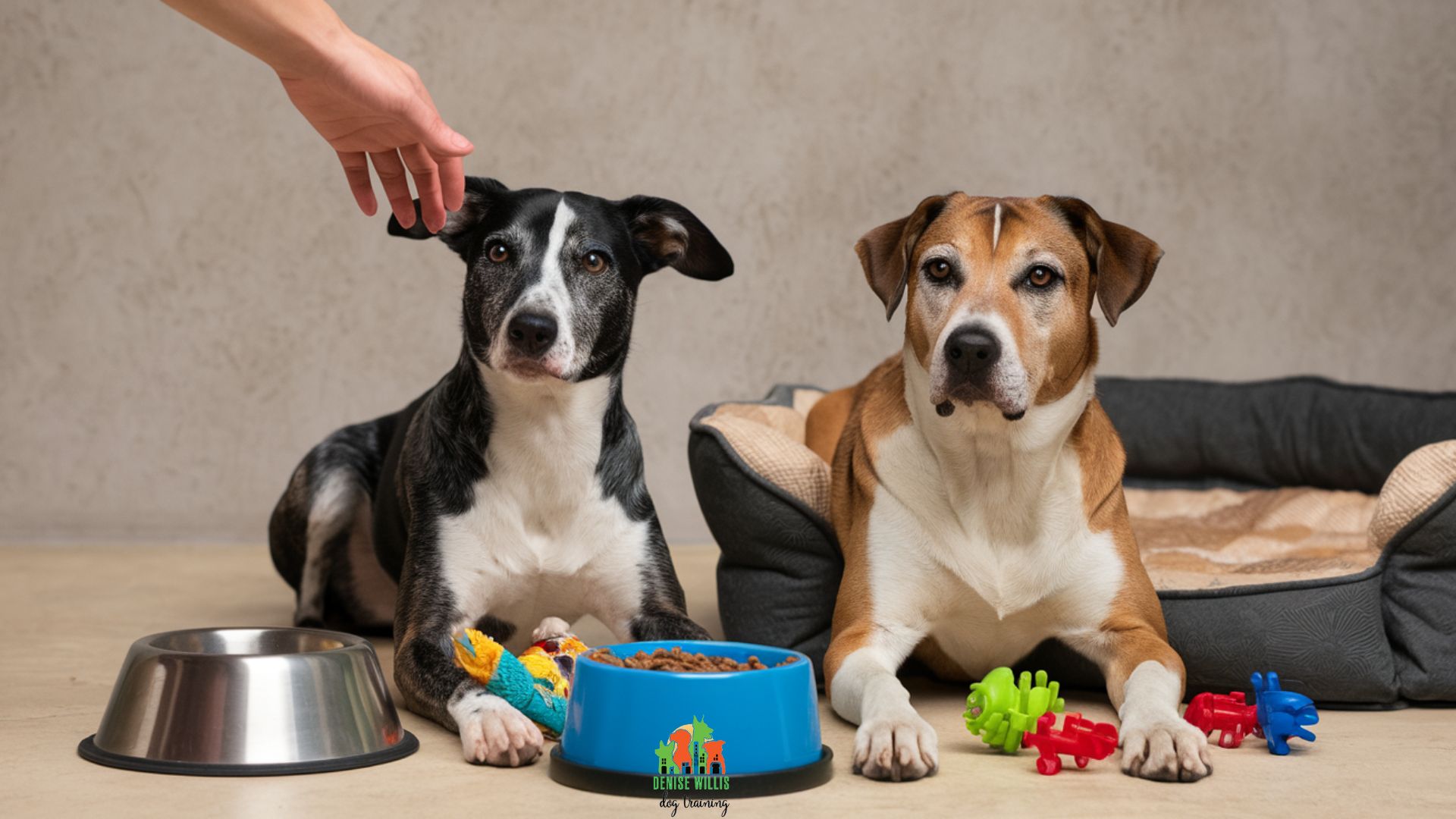
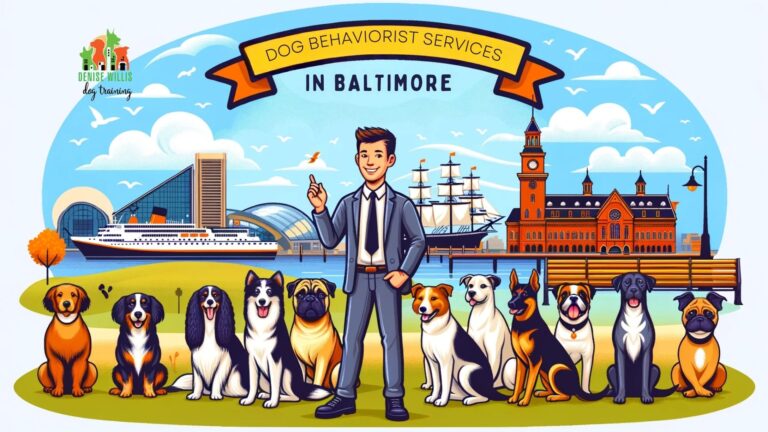
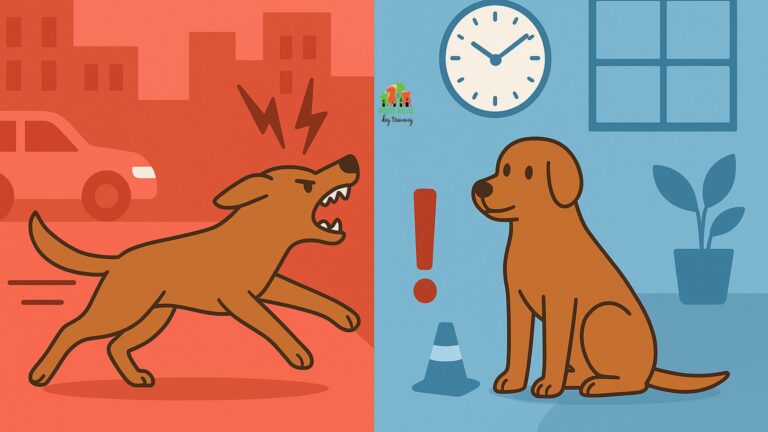
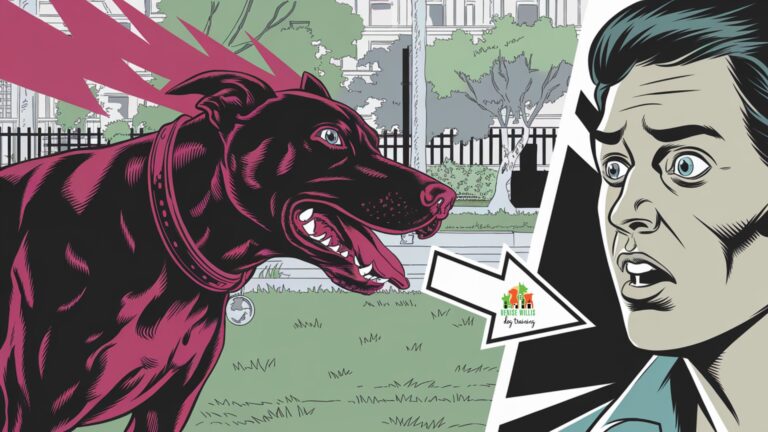

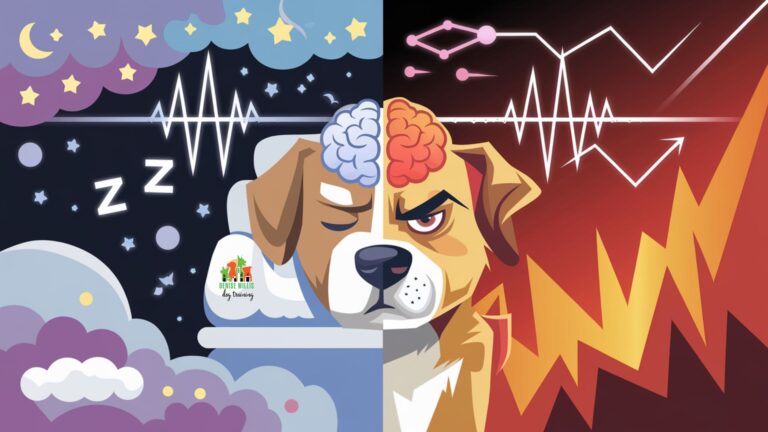
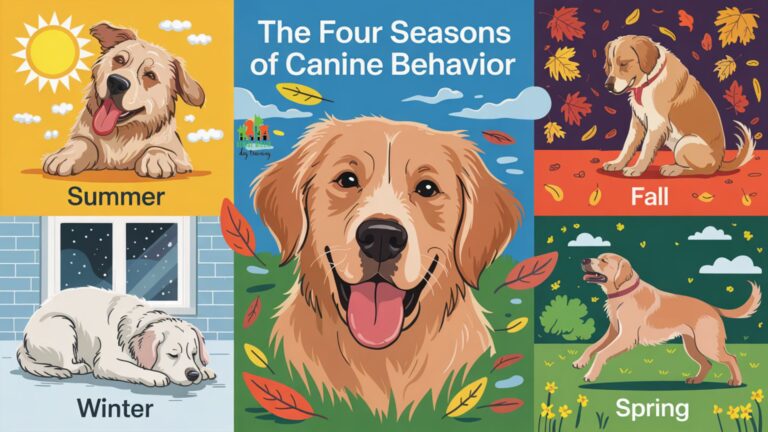
Thank you for the help, I my 1 1/2 year old dog is aggressive when she has toys, I have a new puppy she plays with but gets ugly about toys. I will work with her with treats.